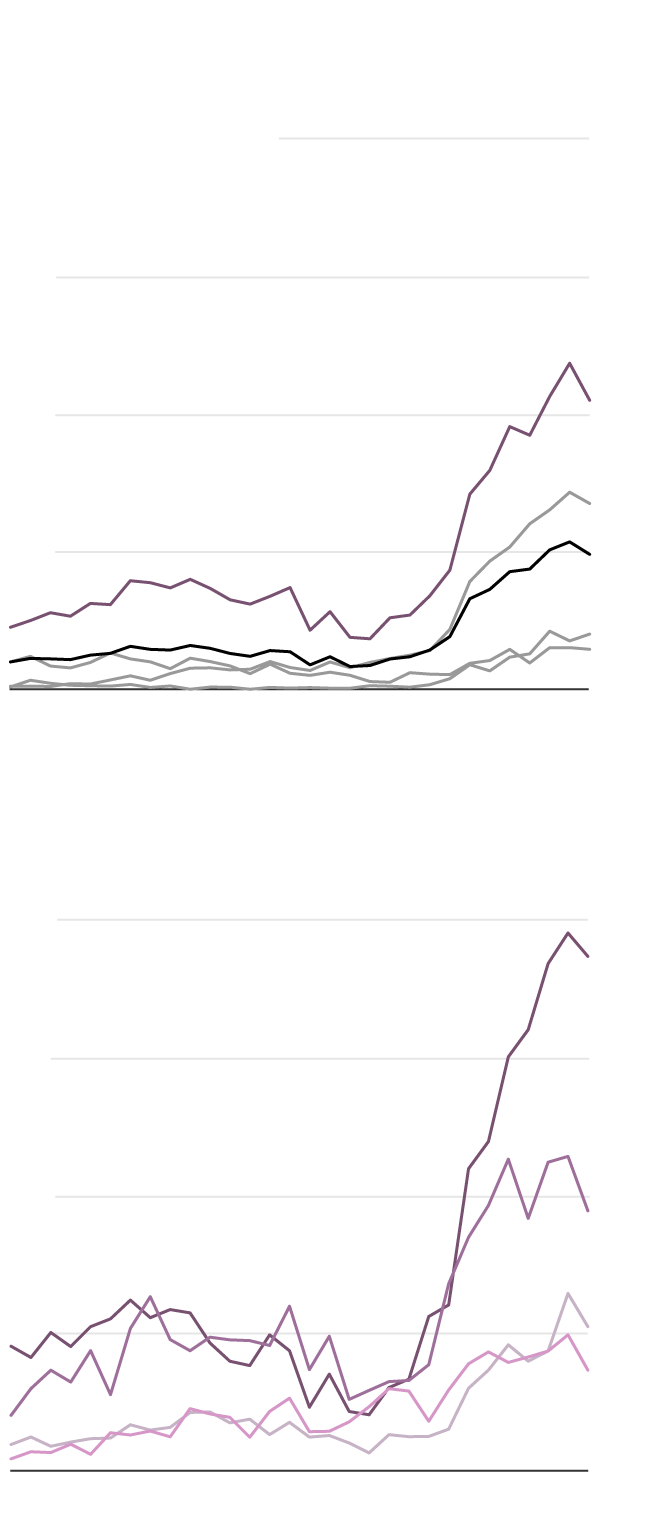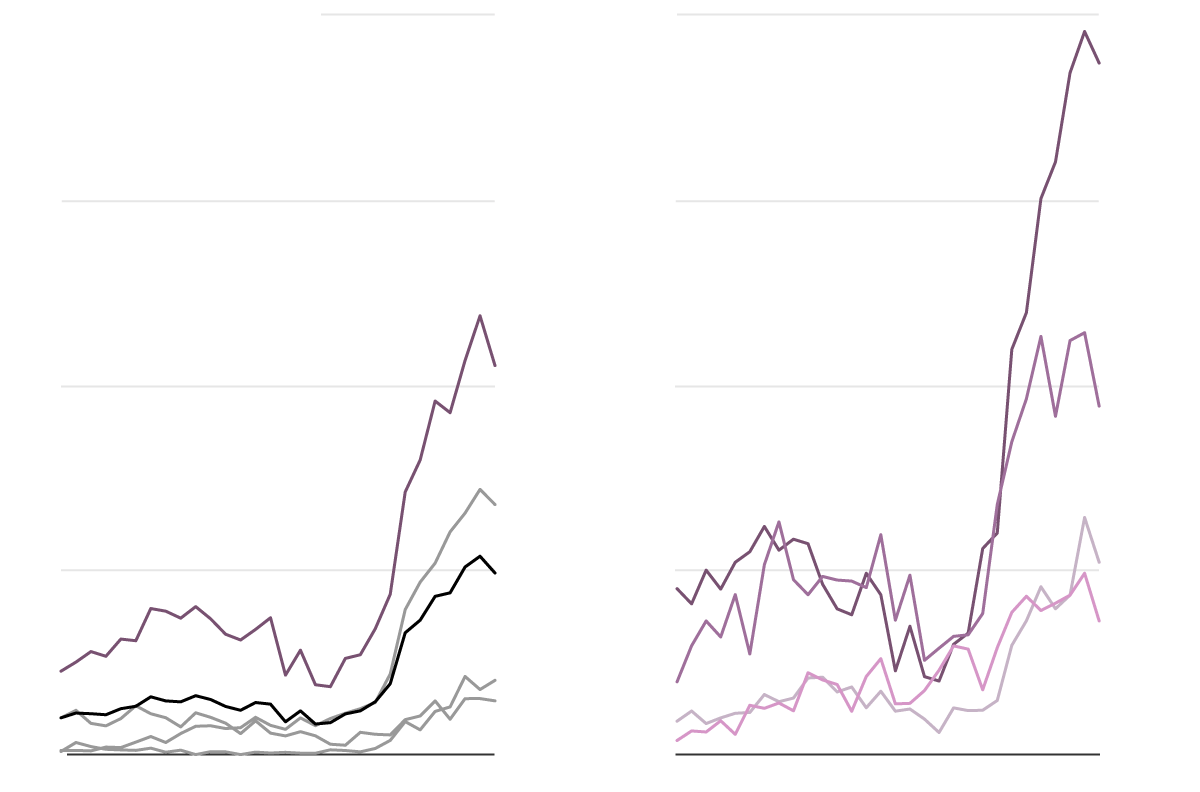Larnell Robinson sat at a desk in his cluttered office last September, between a bookshelf full of Bibles and a table stacked with the overdose antidote Narcan. He slid out a list of residents of the West Baltimore high-rise where he was tenant council president — one of dozens of subsidized complexes that house the city’s poor seniors. One by one, he began scratching through names, conducting a grim accounting of the dead.
William, 63, killed by fentanyl and found in his ninth-floor unit in February 2023. Richard, 61, discovered in an apartment with multiple drugs in his system two and a half weeks later. David, 68, three days after that, also dead from fentanyl.
And then 59-year-old Glenn, who had lived on Mr. Robinson’s floor for years. Known for his willingness to run errands for others, he often biked to the store to get Mr. Robinson cigarettes. But after not seeing Glenn for a day, Mr. Robinson stuck a flier in his door. When it was still there the next morning, he summoned security.
This was one death, Mr. Robinson said later, that he couldn’t bear to witness. “I feel like I work at the morgue sometimes,” he said in an interview.

Over the past six years, as Baltimore has endured one of America’s deadliest drug epidemics, overdoses have fallen surprisingly hard on one group: Black men currently in their mid-50s to early 70s. While just 7 percent of the city’s population, they account for nearly 30 percent of drug fatalities — a death rate 20 times that of the rest of the country.
A generation devastated by drugs

People born between 1951 and
1970 have fatally overdosed at
the highest rates in Baltimore.
800 deaths per 100,000
600
BORN
BETWEEN:
1951-
1970
400
1971-
1990
200
All
1991-
2010
1931-
1950
1993
2022
Within that generation, Black men have
far exceeded other demographic groups.
800
Black
men
600
400
White
men
Black
women
200
White
women
1993
2022

800 deaths per 100,000
Black
men
People born between 1951 and
1970 have fatally overdosed at
the highest rates in Baltimore.
Within that generation,
Black men have far exceeded
other demographic groups.
600
BORN
BETWEEN:
1951-
1970
400
White
men
1971-
1990
Black
women
200
All
White
women
1991-
2010
1931-
1950
1993
2022
1993
2022
Drug deaths among Baltimore’s Black men

This chart shows decades of fatal overdoses
among Black men in Baltimore, with those
born between 1951 and 1970 highlighted
in dark purple.
118 out of
155 total deaths
1993
23
42
Ages
1994
1995
1996
1997
1998
1999
2000
30
49
Ages
As they got older, the bulk of the city’s
overdose victims aged with them.
2001
2002
2003
2004
2005
2006
2007
37
56
Ages
In the mid-2000s, fatal drug overdoses
dropped to an all-time low. But men of
this age still died the most.
2008
2009
2010
2011
2012
2013
43
62
Ages
In 2013, as these men entered middle age,
fentanyl began making Baltimore’s drug
supply more addictive and extremely deadly.
2014
2015
2016
2017
2018
2019
2020
2021
277 out of
465 total deaths
2022
52
71
Ages
By 2022, as these men were in their
early 50s to early 70s, they were dying
in tremendous numbers.

This chart shows decades of fatal overdoses among Black men in Baltimore,
with those born between 1951 and 1970 highlighted in dark
purple.
118 out of
155 total deaths
1993
42
23
Ages
1994
1995
1996
1997
1998
1999
2000
30
49
Ages
As they got older, the bulk of the city’s overdose victims aged with them.
2001
2002
2003
2004
2005
2006
2007
56
37
Ages
In the mid-2000s, fatal drug overdoses dropped to an
all-time low. But men of this age still died the most.
2008
2009
2010
2011
2012
2013
43
62
Ages
In 2013, as these men entered middle age, fentanyl began making
Baltimore’s drug supply more addictive and extremely deadly.
2014
2015
2016
2017
2018
2019
2020
2021
277 out of
465 total deaths
2022
52
71
Ages
By 2022, as these men were in their early 50s to early 70s,
they were dying in tremendous numbers.
Got a confidential news tip?
The New York Times would like to hear from readers who want to share messages and materials with our journalists.




